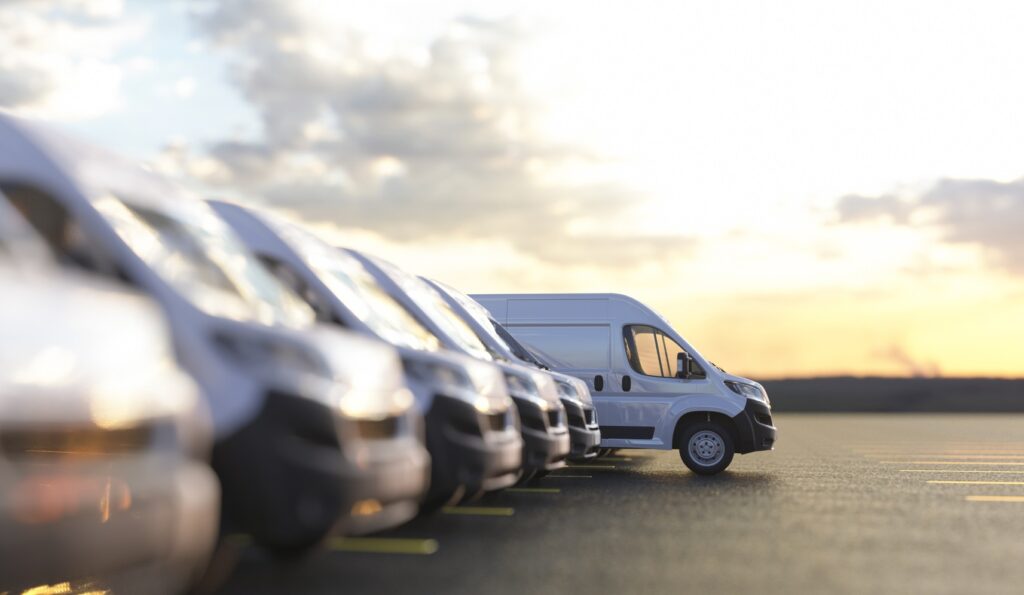Petrol holds ground in EU’s February new-car registrations
21 March 2023

For the seventh consecutive month, new-car registrations in the EU recorded year-on-year growth. February saw an increase of 11.5% across the bloc, as the automotive industry continues its recovery from component supply issues and the COVID-19 pandemic.
The increase in registrations was marginally stronger than January’s 11.3% rise, although when adjusted for working days, the first month of the year saw an increase of 7.1%. February’s working days matched those from 2022, meaning no adjustment is required.
According to the latest European new-car registration data released by the European Automobile Manufacturers’ Association (ACEA), 802,763 passenger vehicles left dealerships last month. Across the entire continent, registrations grew 12.2%, with 902,775 new cars taking to the road.
While continued growth reflects positively on market conditions, the supply crisis faced by carmakers during the last two years is likely sustaining the improved figures. Carmakers are delivering on orders placed months ago, with the lead time for vehicle purchases having increased as production lines waited for supplies of crucial components, including semiconductors. Once the backlog of deliveries starts to clear due to reducing waiting times, the run of double-digit increases may come to an end.
Additionally, EU new-car registrations were down 22.3% last month compared to the same period in 2019, the last February before COVID-19 began disrupting the market in 2020. This highlights the ground still to be covered by the automotive industry if it wants to achieve the highs of pre-pandemic years.
In the major European markets, a rollercoaster ride of registrations continued last month. France saw an increase in new-car registrations of 9.4%, exceeding its January levels, yet the growth rate was poorer in Spain and Italy than in the first month of 2023. Germany also improved its position relative to the first month of the year, but a 2.8% increase is still poor compared with other major markets.
Outside the EU, the UK new-car market is riding a positive wave, with registrations up 26.2%. This further illustrates the ripple effect between sales and orders. February is often seen as a slower month in the country, due to the release of new registration plates in March. Such a large increase is therefore likely to be linked with ongoing deliveries, rather than buyer choice.
Petrol leads registrations
Although there were improvements in the sales of electric vehicles (EVs), petrol was once again the leading fuel type. Its 36.9% share of the EU market is just 0.1% down on last year, with new-car registrations rising 11.1%. Spain (up 19%), Italy (up 16.3%) Germany (up 8.9%), and France (up 7.7%) all contributed to this growth.
These figures should worry those looking to push EV strategies, as there is clearly still an appetite for petrol models in Europe. Diesel registrations dropped 8.4% in February to a market share of 15%, down from 18.2% the year before, as the fuel type continues its fall from grace.
EVs, including hybrid-electric vehicles (HEVs), plug-in hybrids (PHEVs) and battery-electric vehicles (BEVs) made a collective market share gain of 3.3%. Within this electrified sphere, PHEVs saw a drop in registrations, falling 7.4% in February thanks in part to the end of subsidies in Germany last year. This left the powertrain with a European market share of 7.2%, down 1.4% year-on-year.
BEV registrations increased by 39.7% to reach 97,300 units, leaving it with a market share of 12.1% last month. Only two markets recorded a decrease in February, with the Czech Republic dropping 3.2%, and Slovakia down 28.2%, albeit on smaller figures. Germany saw a 14.7% rise, with France (up 45.7%) and the Netherlands (up 88.9%) also doing well.
Of all the EV technologies, HEVs performed best once again, with registrations increasing 22.3% year-on-year, and market share up 2.2% to 25.5% in February. Meanwhile, registrations of ‘other’ fuel-type categories increased their market share by 0.2%.
While there is a push for the sale of zero-emission technologies, the likes of BEVs will struggle to make serious inroads into the European market while demand for petrol remains strong. Since the collapse of diesel, petrol has been the leading force in new-car markets. While its power and share are weakening, it is not slowing enough to reach a tipping point towards zero-emission vehicles any time soon.
To ensure growth in plug-in vehicle sales, efforts need to be made by both carmakers and governments. Vehicle manufacturers can look to lower prices by developing new supply chains and building critical EV components, such as batteries, closer to home, establishing gigafactories to better control costs and supplies. An increasing number of new BEV models and concepts in recent months, including the Volkswagen ID.2all and the Ford Explorer, suggest that manufacturers are seriously embracing the technology and delivering vehicles for all needs.
Governments also need to act. While many have lowered, or even dropped EV subsidies completely, despite the technology still being prohibitively expensive for some, more needs to be done to expand charging infrastructure in Europe. Making electric vehicles more convenient to own will improve their standing with prospective buyers.
Around the EU big four
The biggest four markets in Europe performed well last month, although month-on-month growth slowed in some regions. According to data released by the CCFA, the French automotive-industry association, 126,237 new cars were registered in the country last month. The year-on-year growth of 9.4% exceeded the 8.8% upturn in January, which translates to only 3.8% growth when adjusted for the additional working day compared to January 2022.
In Italy, industry association ANFIA reported that 130,365 new cars were registered last month, up 17.5% year on year. This was slightly weaker than the 19% growth in January, although this upturn was 13.3% when adjusted for the extra working day in January 2022.
A total of 74,001 new cars were registered in Spain during February, according to ANFAC. The 19.2% year-on-year growth was significantly lower than the 51.4% gain in January, although the latter reduces to 44.2% when adjusted for the extra working day in January 2022.
Germany saw its registration volumes level out after a slow start to the year. The 2.8% year-on-year increase, according to the latest data from Germany’s Kraftfahrt-Bundesamt (KBA), meant 206,010 units left showrooms last month. When added to January totals, 385,500 passenger cars have been registered, a figure on par with the first two months of last year.



